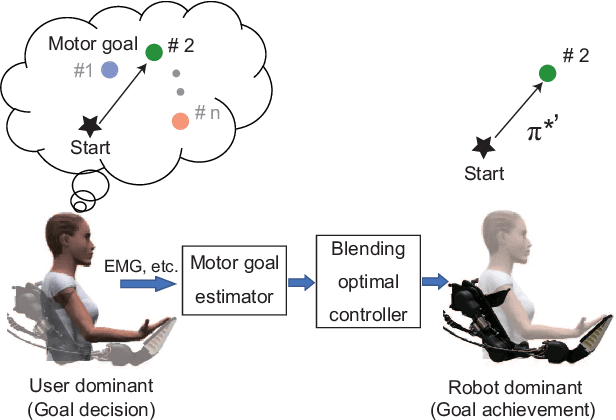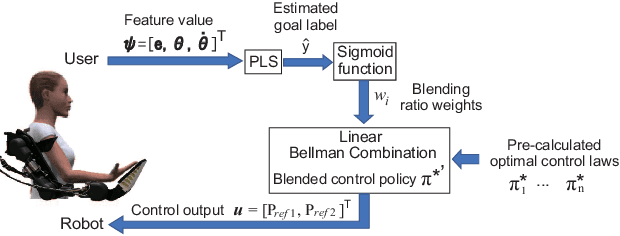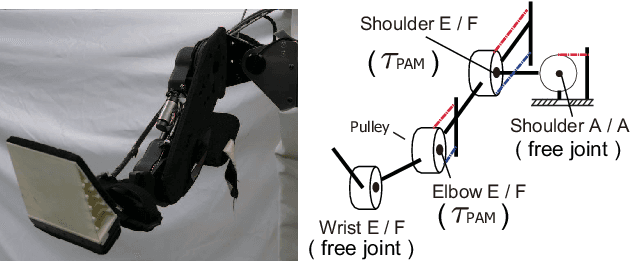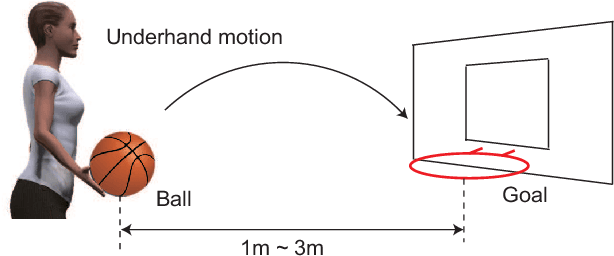Jun-ichiro Furukawa
An Optimal Assistive Control Strategy based on User's Motor Goal Estimation
Sep 05, 2019



Abstract:In this study, we propose an optimal assistive control strategy that uses estimated user's movement intention as the terminal cost function. We estimate the movement intention by observing human user's joint angle, angluar velocity, and muscle activities for very short period of time. A task-related low-dimensional feature space is extracted from the observed user's movement data. We assume that discrete number of optimal control laws associated to different target tasks are pre-computed. Then, the optimal assistive policy is derived by blending the pre-computed optimal control laws based on the linear Bellman combination method. Coefficients that determine how to blend the control laws are derived based on the low-dimensional feature value that represents the user's movement intention. To validate our proposed method, we conducted basketball throwing tasks. In these experiments, subjects were asked to throw a basketball into a hoop placed at different throwing distances. The distances from the throwing point to the hoop were estimated as the user's movement intention and the optimal control policies were derived by using our proposed method. The results showed that the basketball throwing performances of the subjects were mostly improved.
 Add to Chrome
Add to Chrome Add to Firefox
Add to Firefox Add to Edge
Add to Edge